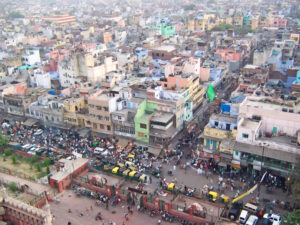India’s 5% biomass blending mandate for power plants has created a daily demand of 100,000 tonnes of biomass fuel, yet current supply stands at just 5,000 to 7,000 tonnes, deepening North India’s stubble burning crisis.
According to Mohit Verma, founder of Biomass Energeons India, major implementation gaps are undermining both India’s Net Zero 2050 goals and urgent air quality targets.
“The smog around Diwali is largely due to stubble burning,” said Verma, whose firm processes over 50,000 tonnes of agricultural waste annually.
“Farmers can sell this waste instead, turning pollution into profit.”
Despite strong government support - subsidies of ₹21 lakh (around €23,000) per tonne for non-torrefied pellets and capital assistance of up to ₹1.05 crore (about €115,000) - the sector lacks manufacturing capacity and structured supply chains.
Most biomass facilities are regionally concentrated, while agricultural waste is generated across farming belts, complicating logistics.
Verma noted that transitioning from informal to industrial-scale operations remains a major hurdle.
“We had to learn machinery operations hands-on - this is still an unorganised space,” he said.
While biomass can reduce fuel costs by at least 35%, adoption has been slow.
With 2.5 kg of biomass pellets matching the energy of one litre of diesel, sectors like food processing can halve their energy expenses by switching.
He emphasised the wider benefits of biomass energy, from rural job creation to carbon reduction. With the blending mandate set to increase to 7% next year, Verma called for urgent infrastructure expansion.
“We need a coordinated ecosystem—farmers, industry, and government—if we’re to make this policy a success,” he said.
India’s biomass supply falls drastically short of government mandate















